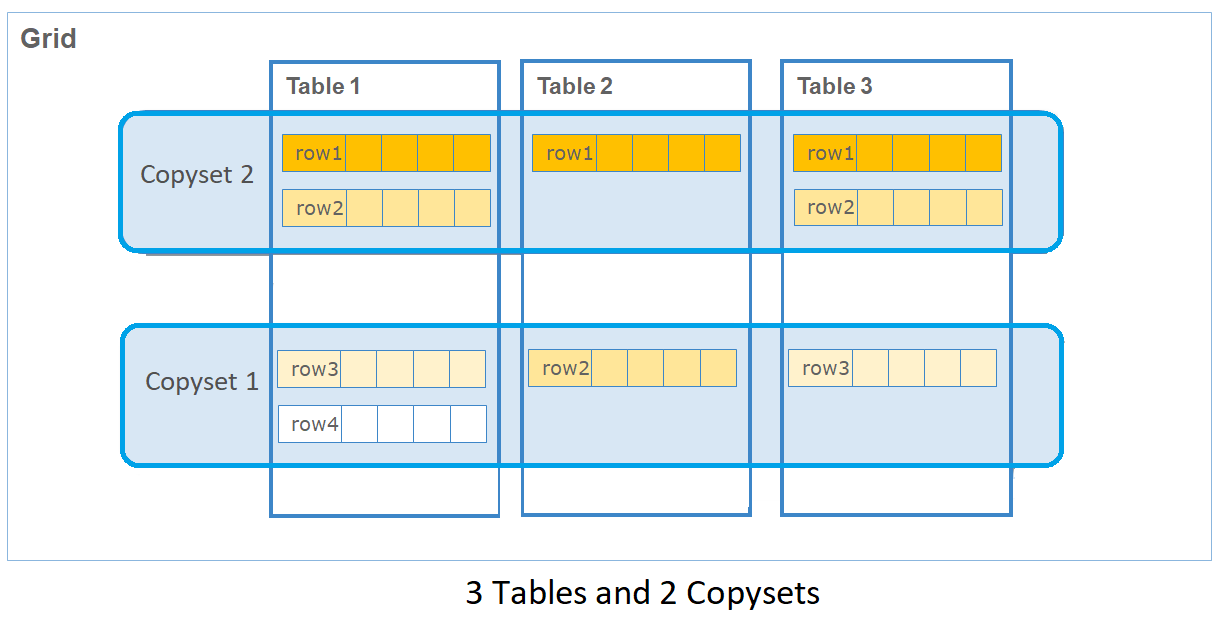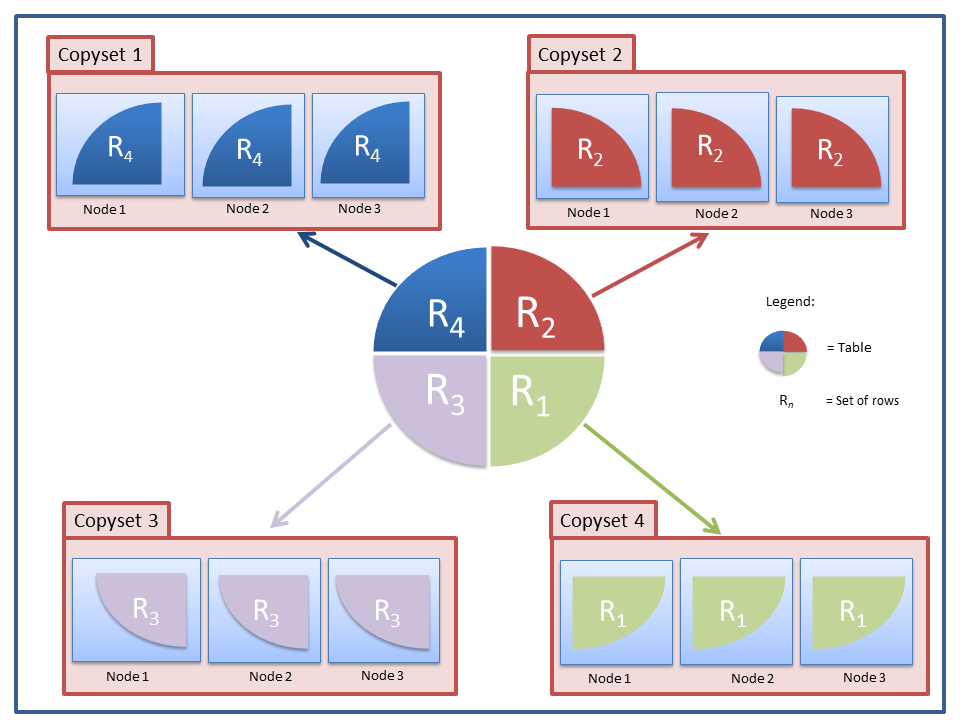How Is the Data Stored in a Data Grid?
Unlike traditional RDBMS, a data grid is not stored in one place. An ActiveSpaces data grid leverages the storage capacity and computing power from multiple computers.
To understand how the data is stored, you must first familiarize yourself with the following concepts:
Nodes
A node is an
ActiveSpaces process running within a computer. The node holds a portion of the data forming the data grid both in memory and on disk. The smallest unit of data held by a node is a row. Other than storing data of a row, the node is also responsible for handling requests to read or update the row. As a result, the data spanning across a group of nodes collectively form a data grid.
Nodes can be run from a physical computer, a virtual machine, or a Docker container.
Persistence on Nodes ActiveSpaces supports the Shared Nothing mode of persistence where every node saves its data locally to the disk.
Copysets
Copysets are logical grouping of nodes such that a portion of the data is shared uniformly by all the nodes that form a copyset. This ensures fault tolerance. Every node in the copyset, also known as the replica, has an identical copy of the data. For example, assume that a row (R1) comprises employee name, employee ID, and department. There are nodes, N1, N2, and N3 in copyset1. N1, N2, and N3 store identical copies of R1. When you add new data or request for an update on a row in a copyset, the update is written to all the nodes in the copyset before acknowledging the success of the operation. Keeping the nodes of a copyset on different computers helps prevent data loss during system failures.
Copysets help you scale your data horizontally. When you add a new copyset to a data grid, you can redistribute the existing data to the new nodes of that copyset, thereby distributing the load on the data grid with the help of the newly added copyset.
The following image is a logical diagram showing how rows of three tables are distributed across two copysets in the data grid.
Rows Distributed Across Copysets In the following image, the rows of a table are broken down into four sets (each owned by a different copyset). The nodes running in a given copyset are identical replicas of each other.
How One Table is Distributed in a Data Grid with Four Copysets and Three Nodes
To understand more about sizing a copyset and a data grid, see
Sizing Guide.
Primary Node
When a copyset has more than one node in a copyset, one of the nodes is the primary node, which stores data and provides read access. The other nodes in the copyset are secondary nodes that store backup copies of the data. The key role of the primary node is to interact with the proxy process. The primary node receives the client operation and replicates it to the other nodes in the copyset. The client operation is applied in parallel at the primary node and all secondary nodes. The primary node is responsible for sharing the result of the request with the proxy.
If the primary node goes down for some reason, one of the other nodes in the copyset takes over as the primary node. Updates from client applications continue as usual without any loss of data because all of the data has been replicated from the original primary node to all of the other nodes in the copyset. The nodes of a copyset must reside on different machines to ensure that one machine failure does not cause data loss.
Reasons for Using Multiple Nodes
There are several reasons for using multiple nodes:
- Nodes in different copysets are created with the goal of scaling horizontally. Thus, multiple copysets are created, each with a slice of the data.
- Nodes in the same copyset are created to provide multiple replicas for fault tolerance. These contain identical copies of the data.
- In a production environment, you might decide to use multiple nodes for a combination of reasons. For example, you might choose to have two replicas per copyset and multiple copysets (say three) to scale horizontally. In this example, your environment would have a total of six nodes.
To sum it up, the data is stored in copysets as described in the previous sections. The copysets put together form a data grid.

